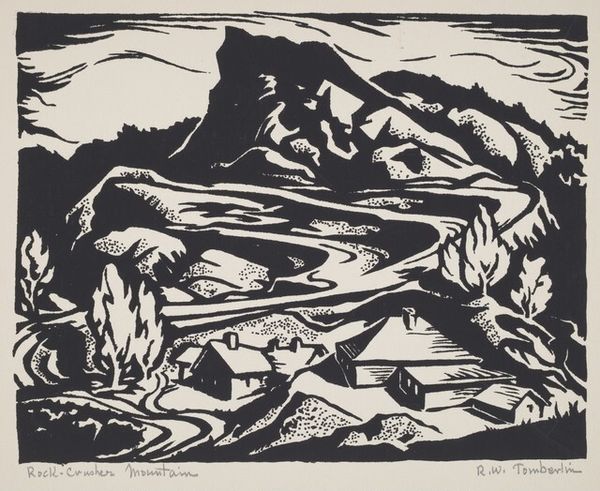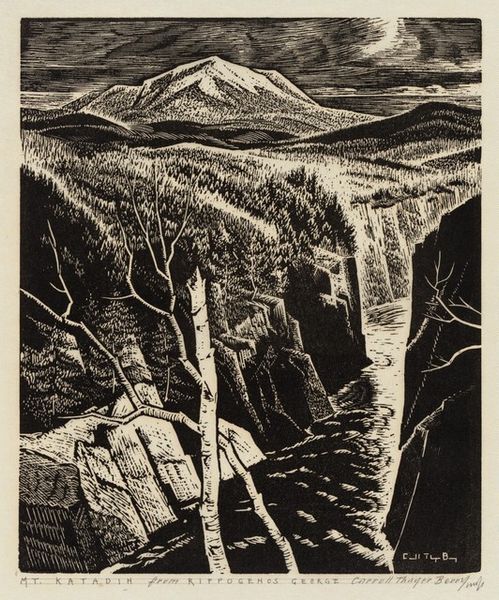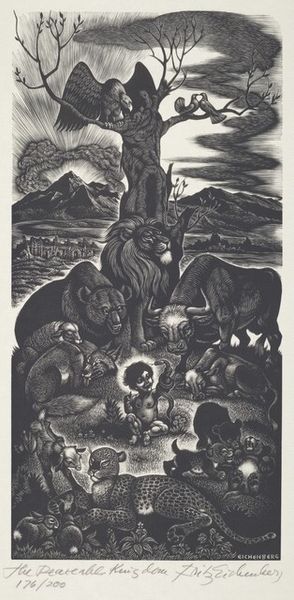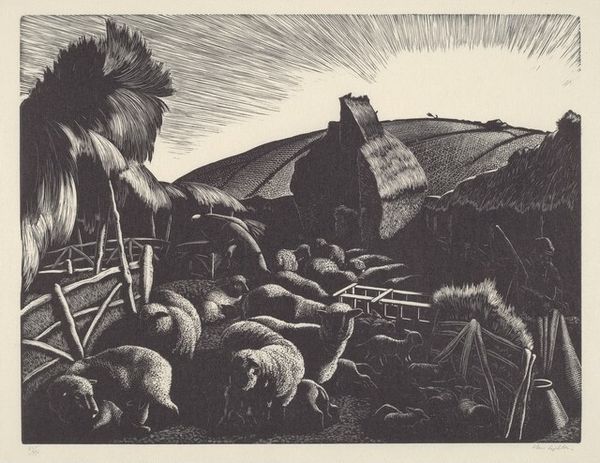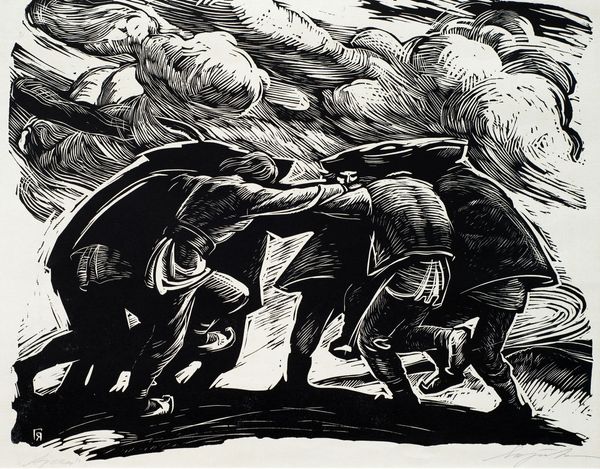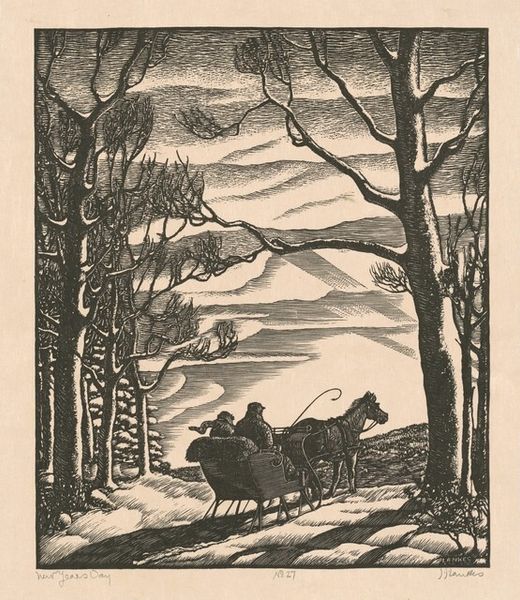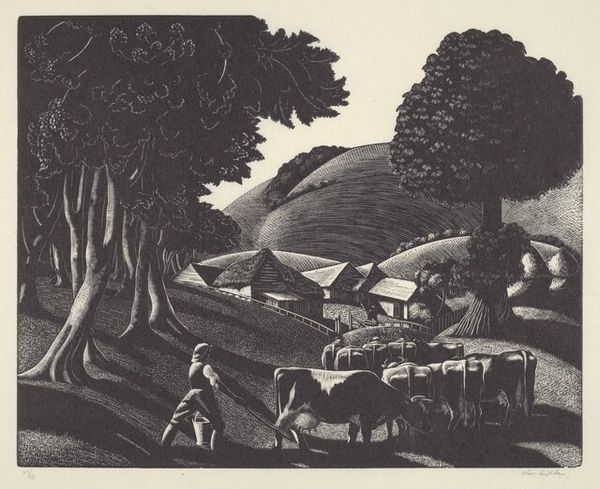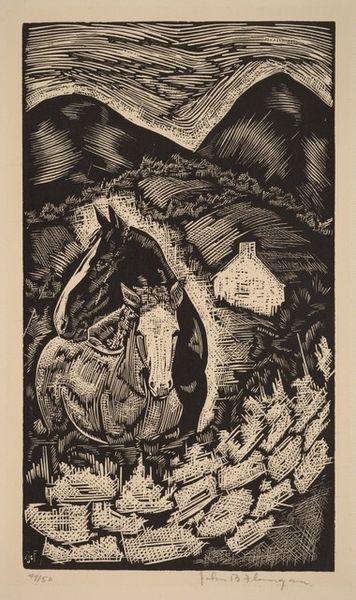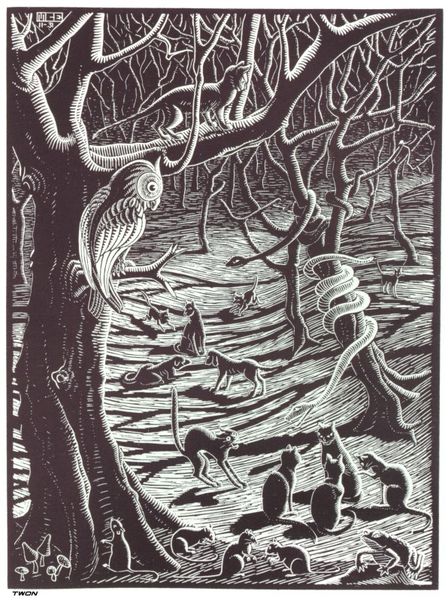
print, woodcut
# print
#
landscape
#
woodcut
#
realism
Dimensions: image: 26.99 × 19.05 cm (10 5/8 × 7 1/2 in.) sheet: 35.56 × 27.78 cm (14 × 10 15/16 in.)
Copyright: National Gallery of Art: CC0 1.0
Curator: "Trail Ride", a woodcut print created around 1964 by Kirk Martin, immediately presents itself through its dramatic use of black and white. Editor: Yes, it’s quite stark. I’m drawn in by that high contrast and how it carves out the Western landscape. It feels cinematic, like a still from an old cowboy film. The shadows almost overwhelm the light. Curator: The choice of the woodcut technique really accentuates that contrast, doesn't it? There is a powerful narrative tradition that continues in this artwork, using cowboys on horseback as figures. The cowboys almost disappear, though. They become figures in the landscape itself. Editor: Disappear how? They're right there in the foreground on horseback. Curator: Well, yes, they are present but consider the composition and how it emphasizes the natural features more than their own identity. The mountains stretch into the distance, the sky swirls above... It’s as though the West is so expansive and demanding it overshadows the people within it. Editor: Interesting point. And that interplay between the figures and the setting… isn't that precisely what shaped so much of Western lore? The mythic narrative always hinged on that very tension: individuals tested by unforgiving nature. So it's not really a diminishment but an archetypal reduction. Curator: Reduction may be the exact word for what interests me most here. Martin captures the West at a time when its image was changing through mass media, film, and the evolving popular understanding of the frontier. It becomes less about conquering and more about contending. That feels embedded in the image. Editor: The starkness reinforces this—as a historian I can see how it speaks to that transitional moment in the 1960s where idealized frontier myths meet harsher, more complicated realities of the American West and the way it's evolving as a national ideal. The black and white carries a sense of disillusionment, I would say. Curator: It's quite true that woodcuts are less commonly used in our time; still this image reminds us of some very deep, primordial narratives of journey and exploration that echo across centuries. Editor: Exactly, seeing art through these lenses makes the ride a journey of both the eye and the mind.
Comments
No comments
Be the first to comment and join the conversation on the ultimate creative platform.
